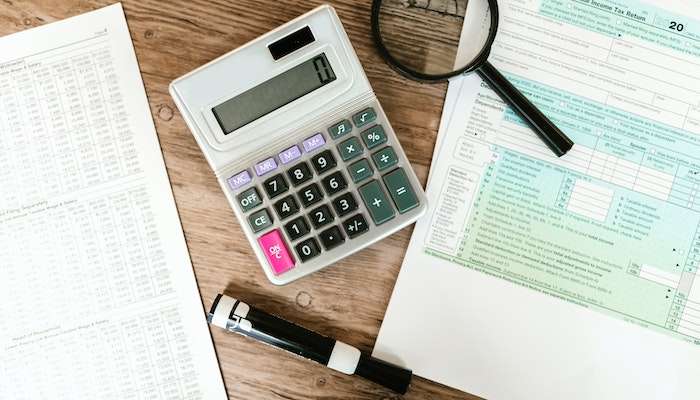
The average millennial currently has close to $100,000 in debt, mainly because they don’t know about debt management. Whether you are drowning in debt or just trying to make better decisions about your spending habits, understanding these six things about debt will help you manage your finances so you can gain peace of mind.
1. There Are Different Types of Debt
Credit cards, car loans, and medical bills are all considered debt. However, not all of these types of debt are the same. You need to know about the different types of debt because they can impact you differently.

First off, debt can be secured or unsecured. Secured debt is any form of debt in which there’s collateral, an asset that can be used to pay off the debt if the borrower defaults on their loan. Car loans and mortgages are examples of secured debt. Inversely, credit cards, student loans, and personal lines of credit typically fall into the unsecured debt category, meaning there isn’t any collateral involved.
Furthermore, debt can either be revolving (open-ended) or installment-based. Revolving debt, like credit cards and home equity lines of credit, let you continue to charge and pay down the debt, which means the total amount of debt varies every single month. Inversely, personal loans, mortgages, and other installment debt require you to make regular payments until your borrowed amount is paid in full. The balance gradually decreases with each payment made.
Each type of debt has different terms and conditions. Also, each type of debt can impact your credit score differently.
2. Credit Cards Are Still Debt
Very few people carry paper money or checks around anymore. Instead, people rely on debit or credit cards to purchase items. Although both debit and credit cards work the same way, credit cards still incur debt.

When you use a credit card, you use borrowed money to purchase items. You will be charged interest on the remaining balance if you don’t repay the total amount by each month’s due date. This interest then creates more debt to pay off. This debt can quickly snowball if not correctly managed.
While this doesn’t mean you can’t use credit cards to buy items for your new apartment, you do need to pay attention to how much you spend. Be sure you can pay it off in a reasonable amount of time, and look for low-interest options if they are available.
3. Your Debt-to-Income Ratio Impacts Your Creditworthiness
When you apply for a credit card or loan of any type, lenders look at various factors to determine the risk involved with giving you the money. They look at your credit score, but they also look at other things. One of these factors is your debt-to-income ratio (DTI).

DTI is your total debt divided by the amount you earn. This ratio is expressed as a percentage and compares monthly income versus monthly debt payments. This ratio also looks at all of your recurring monthly debt, which means it adds rent, vehicle loans, credit cards, and any other monthly financial obligations to t the total.
The higher your debt-to-income ratio, the more risk you pose to lenders. If you are concerned about your DTI, you can try paying down some of your debt to lower the total amount you owe. Managing your debt-to-income ratio is an important part of being an adult.
4. Tracking Debt and Spending Habits Matters
Now that most people use electronic payments regularly and don’t write physical checks, far less people balance their checkbooks each month. In fact, over half of all Americans don’t regularly follow a monthly budget.
However, tracking your spending habits and income can be necessary for debt management. If you track your spending habits, you can see places to cut back or make adjustments. You may also see why you’ve accumulated more debt and make changes to pay down that debt.
5. How Interest Works

Interest is essentially a fee you pay for borrowing money from a lender. However, this rate isn’t necessarily a flat, one-time fee. With credit cards and other types of debt, you incur interest every month you carry a balance. So, the longer you take to pay down your debt, the more you’ll pay due to interest.
6. The Best Way to Pay Off Debt
Many people find debt repayment overwhelming because they pay the minimum payment each month on their debts and don’t see much progress. However, most experts say that’s the worst approach and recommend other methods.
One popular way to pay off debt is the snowball method. In this approach, you pay down the smallest debt first, then use the money you would put towards that each month to pay towards the next debt. As you pay off more debts, you will free up more money, meaning you’ll pay off more debt faster.
Also, credit cards often carry high interest rates and can be hard to pay off. Therefore, people who want to pay down multiple credit cards often use debt consolidation loans to do this. These loans help you lock in a lower interest rate and ensure you make regular monthly payments.
Frequently Asked Questions
What is a credit score?
Your credit score is a numerical expression of how likely you it is you will pay back a loan on time. Your credit score looks at your debt, income, and payment history to make a prediction. These scores can range from 300 to 850.
Should I close credit cards when I pay them off?
Typically, having a low credit utilization score is positive. This means that if you have open credit cards but don’t carry balances, you have a low credit utilization and likely a high credit score. Therefore, you should keep some cards open, even if you don’t plan to use them regularly.
Image credit: Pexels







